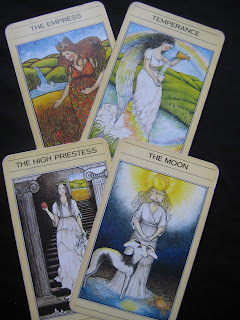In some cultures,
tradition is such that every February 29th the woman may propose marriage. I'm
not personally planning to take advantage of that window, but it has set me
thinking about the whole subject of marriage, union, and the balance of male
and female, anima and animus, in our society, workplaces and our own internal
lives. Not a typical leadership topic, I grant you, but one
which may be important for maximising our potential, both individually and
collectively.
Carl Jung wrote extensively
about our masculine (animus) and feminine (anima) traits, the archetypes
of the unconscious mind. Regardless of our gender, we have both. The more conscious we are of them, the more we
can ‘wed’ them within ourselves, the more access we have to our skills, talents
and gifts.
From our stories to our
structures, we can see how our organisations reflect society’s developed animus.
Traits that are honoured are those which
come from a place of strength and are associated with values of initiative, courage
and rational deduction. They echo a deep belief in the value of one’s own life.
Our feminine side, our
anima traits seem to be more hidden in organisational life and society.
But they are there. These are the traits with a strong emphasis on the outward
expression of feeling, of connection and sensitivity to events which impact on
people’s inner lives. These echo a deep belief in the value of the life of
others.
What does it mean to
support and value people in environments more familiar with challenge and
structure?
How may we access our
feminine traits as men or women working in a male-dominated world, to bring
more balance within ourselves and within society?
Here we can turn to
archetypes in myth, legend and storytelling, which flag up universal human
traits, experiences and patterns of development. Archetypes never go out of fashion, because
they express universal truths which, on some fundamental level, we can all
recognise in ourselves.
It's far from being a
traditional organisational tool, but we can draw inspiration from Tarot
cards. During the Renaissance, Tarot card archetypical images were used
for meditation; to help raise one's consciousness and to connect with one’s
true essence. We can still use them today to reflect on anima figures and
consider what qualities they have, which we can reclaim for ourselves, as men
and women.
For example, the ‘Empress’
image, can remind ourselves of our life giving qualities, the value of our body
and our senses, and our bond with nature. This can help us manage our
stress and wellbeing, as the more we are in tune with our own body, the more resourceful
we become. The ‘High Priestess’ who is a connection with
the mysterious inner world can help us reflect on what is within our control and
what we have to let go of in our lives. She also reminds us of the power of
accessing and using our intuition for quick and clear decision making. The ‘Temperance’ angel may prompt us to
explore the function of feelings, what it means for emotional intelligence and working
in harmony, cooperation and collaboration. And the ‘Moon’ figure can inspire us to be comfortable
in whatever phase we are in, and to operate in a VUCA world of volatility,
uncertainty, complexity and ambiguity.
It may be a bit of a
leap, but if we attend to our inner union of anima and animus, perhaps we can
become more integrated and balanced, and help create a more balanced sustainable
society.
Notes:
Sharman-Burke J and Greene, L (1986), The Mythic Tarot, Random House.
Special thanks to Cathy and Si , and Ray for their guidance.
photos: via picks4world.com and own respectively


No comments:
Post a Comment